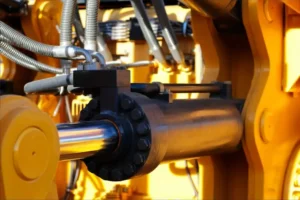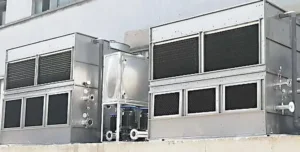
Những điều bạn cần biết về lò nung cảm ứng để nấu chảy đồng.
1. How Induction Furnaces Work
Induction furnaces melt metals using electromagnetic induction. The process involves:
- An alternating current passing through a coil to create a rapidly changing magnetic field.
- This field induces eddy currents in the metal, heating it due to electrical resistance.
- The metal eventually melts, allowing for further processing or casting.
2. Advantages of Induction Furnaces
- Hiệu quả: High thermal efficiency with rapid melting times.
- Precision: Precise control over the melting temperature.
- Cleanliness: Lower contamination risk compared to traditional furnaces as there’s no combustion.
- Environmental Impact: Reduced emissions and noise levels.
- Scalability: Available in various sizes to accommodate different production scales.
3. Types of Induction Furnaces
- Coreless Induction Furnaces: Versatile, used for melting and alloying a variety of metals, including copper.
- Channel Lò nung cảm ứng: Efficient for holding and superheating molten metal.
4. Applications of Induction Furnaces for Copper
- Smelting and Refining: Used for converting raw copper ore into pure copper.
- Alloy Production: Creating copper alloys like bronze or brass.
- Casting: Producing copper components for electrical, plumbing, and industrial applications.
5. Operational Considerations
- Nguồn cấp: Requires a reliable and robust power supply.
- Hệ thống làm mát: Essential to manage heat dissipation from the furnace coil and components.
- BẢO TRÌ: Regular maintenance to ensure coil integrity and prevent breakdowns.
6. Các biện pháp an toàn
- Personal Protective Equipment (PPE): Workers should use appropriate PPE to protect against heat and molten metal splashes.
- Furnace Integrity: Regular inspections to ensure structural and operational safety.
- Đào tạo: Operators should be adequately trained in handling and emergency procedures.
7. Tiêu thụ năng lượng
- Induction furnaces are generally energy-efficient but can have high initial energy demands. Monitoring and optimizing energy use is crucial for cost-effective operation.
8. Cost Factors
- Đầu tư ban đầu: High upfront costs for the furnace and installation.
- Operational Costs: Ongoing costs include electricity, BẢO TRÌ, và lao động.
- Return on Investment (ROI): Can be favorable due to efficiency and quality of output.
9. Technological Advancements
- Smart Controls: Integration of IoT and advanced sensors for real-time monitoring and control.
- Tự động hóa: Enhanced automation for improved efficiency and reduced labor costs.
- Materials: Advances in refractory materials and coil designs to improve longevity and performance.
10. Tuân thủ quy định
- Ensuring compliance with environmental and safety regulations is crucial. This may involve emissions control, waste management, and adherence to workplace safety standards.
By understanding these key aspects, operators and businesses can effectively utilize induction furnaces for melting copper, achieving high-quality results with operational efficiency and safety.







